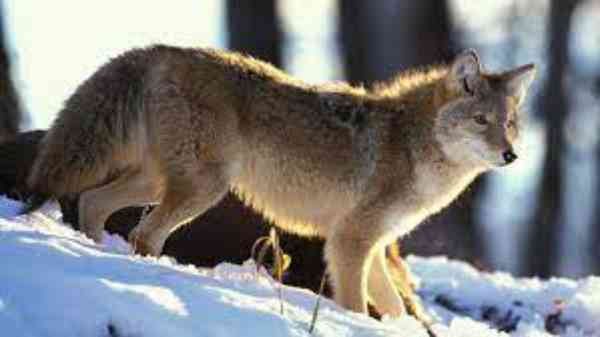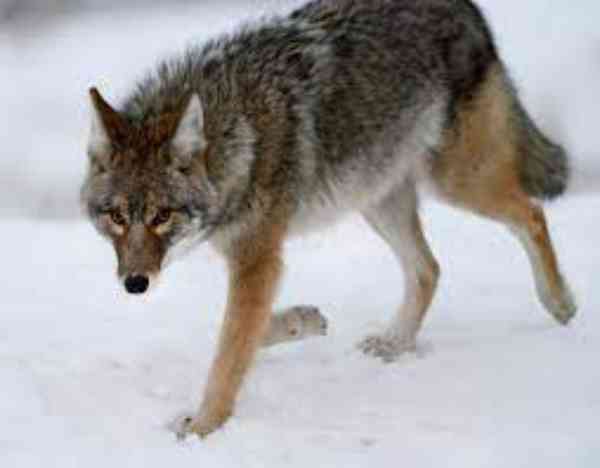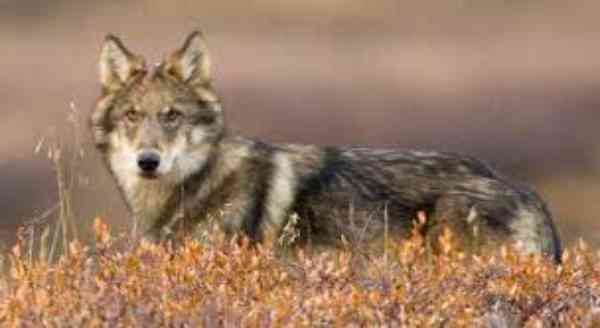Coyotes are a common site in Alaska, and they are an important species in the Alaskan wilderness. Coyotes can be seen darting across the tundra or bounding through the trees of Alaskan forests. Coyotes play a valuable role in their environment by controlling small herbivore populations such as rodents, rabbits and hares. Coyotes are physically well suited to their surroundings, having thick fur that insulates them from cold winter temperatures, allowing them to survive even during harsh winters. Coyotes also have incredible endurance and agility with the ability to easily traverse difficult terrain in search of food or shelter.

Table of Contents
Habitat
Coyotes are found throughout the Alaskan landscape, where their main adaptive strategies allow them to thrive in practically any terrain. These hardy canines travel through a variety of habitats, from forest clearings and dense woodlands to hillsides and valleys. During the cold winter months in Alaska, they seek out protected areas with plenty of food that can provide a warm sanctuary until springtime arrives.
Diet
Coyotes in Alaska are incredibly resourceful animals and have a diet that is reflective of this. Much like their cousins, the wolves, feed primarily on small prey such as mice, rabbits, and gophers. But in addition to hunting smaller mammals, they will also eat berries, fruits, and plant matter when available. They even scavenge in dumpsters or around human campsites for food scraps. Coyotes are also known to enjoy insects, especially when protein from other sources is lacking or scarce. Their flexible diet allows them to thrive in any environment across the Alaskan tundra that they choose to inhabit.
Like most animals in Alaska, coyotes build up their fat reserves during summer and autumn to help survive mild winters with plentiful food sources. During periods of snowfall, coyotes become more adaptive by foraging closer to urban environments; fishing for salmon along streams, raiding seeded areas, or finding new prey species in habitats that would otherwise be inaccessible.

Colour
Coyotes in Alaska range greatly in colour, with the most common being light brown or tawny, but they can also be black, grey and even white. As their coats transition from winter to summer, their colours often change due to thicker fur, as well as moult patterns. Also, the colour of a coyote’s coat is also largely dependent on its local environment and environmental factors like temperature shifts, sunlight exposure and food availability. So it might seem strange that one species of animal can come in so many different colours or shades but it is actually quite natural that the colour of Alaskan Coyotes would vary throughout the seasons and even from place to place.
Size, Lifespan and Weight
The average size of a coyote in Alaska is similar to most other populations across North America; they typically measure between 18 and 33 inches tall and can weigh up to 50 lbs. Coyotes have the longest average lifespan when compared to the rest of their species, living up to 10 years in the wild if they manage to avoid predators and human-inflicted injury.
Predators
Alaska is home to many animals, and the coyote is among them. However, these clever canines still have predators of their own. In Alaska, there have been documented sightings of coyote vs bear encounters, as bears are known to feed on small prey such as coyotes, as well as carrion. Coyotes in Alaska also face predation from other large carnivores in the area, like wolves and cougars. Interestingly, the most common predatory species of coyote in Alaska are actually other coyotes – adult males generally drive off younger competitors for scarce resources like food and mating partners.

Reproduction
The Alaskan coyote population has adapted to have a rather unique mating pattern – males often form alliances with other coyotes and will mate with multiple females of the same partnership. This allows for increased genetic diversity and can tailor a litter of pups to grow up in the best conditions possible. In addition to forming allies, female coyotes tend to breed at younger ages than male coyotes. Females can form connected family units which makes them even more formidable in a region where competition is fierce among other predators.
Do coyotes live in Alaska?
Yes, Coyotes may not be the first species that come to mind when we think of Alaska’s wildlife, but they are notable residents of the 49th state. With their thick fur coats and adaptability, they prove they belong in the far north. Although many people assume coyotes are a southern species, they can be found living in the tundra and boreal forests of Alaska.
Can you shoot coyotes in Alaska?

Are coyotes invasive in Alaska?
Coyotes have become an increasingly hot-button topic in Alaska, as the debate rages over whether or not they are invasive. On one side of the argument, proponents point to the fact that coyotes were brought to Alaska for hunting purposes in the late 19th century and subsequently populated many areas with their presence. Opponents counter by noting that coyotes have been shown to have a significantly negative impact on wildlife populations such as waterfowl, caribou and moose all important subsistence resources for Alaskans.
References:
https://www.adfg.alaska.gov/index.cfm?adfg=coyote.main
https://agrilife.org/txwildlifeservices/files/2016/07/coyote_Dec2011.pdf

Rahul M Suresh
Visiting the Zoo can be an exciting and educational experience for all involved. As a guide, I have the privilege of helping students and visitors alike to appreciate these animals in their natural habitat as well as introducing them to the various aspects of zoo life. I provide detailed information about the individual animals and their habitats, giving visitors an opportunity to understand each one more fully and appreciate them in a more intimate way.









